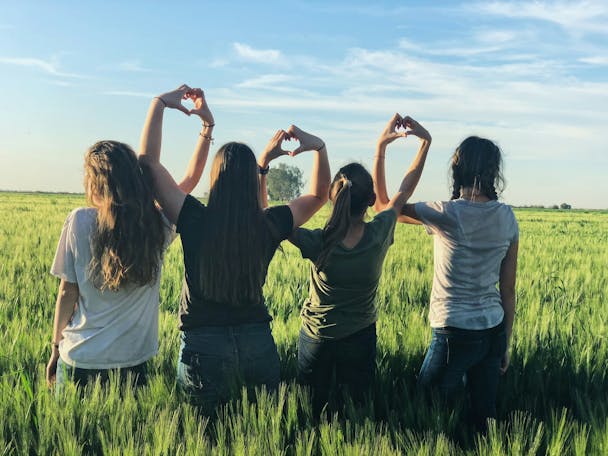Brands have the power to help end the loneliness epidemic
People trust brands more than governments, says Clarice Metzger of Revolt London. By fostering connection, companies can work to beat loneliness – and translate this trust into good.

Working authentically to tackle social issues can result in lots of brand love, says Clarice Metzger / Melissa Askew via Unsplash
We’ve seen the headlines: loneliness is an epidemic. Whether a “global public health concern” or “a signal we’re lacking something for survival”, the need for human connection is greater than ever. The issue even debuted in Revolt’s 2024 Causes That Count – an annual index ranking the 50 issues that matter most to consumers globally – speaking volumes to its growing impact on society.
The issue of loneliness now affects so many of us, cutting across diverse demographics. More than one-third of Americans aged 45 and older feel lonely. In the UK, two in five people living with disabilities experience loneliness. Sadly, people from marginalized backgrounds tend to be among the loneliest in society. And now more than ever, young people are admitting to loneliness – 73% of US gen Z report sometimes or always feeling alone.
We’re beginning to see some government response. The US Surgeon General issued a Framework for a National Strategy to Advance Social Connections. While this is a good thing, government action alone has limitations in addressing such a complex societal issue. Meanwhile, research shows that brands are currently more trusted than governments, showing there’s space for brands to help foster social connections to address this epidemic head-on.
Guidelines exist that can help brands in their work to improve social connections. Strategies from the CDC, for example, include focusing on building high-quality, strong, meaningful social connections. This is a good start. But, how can brands best effectively translate intention into action?
Explore frequently asked questions
Find an angle
Digital devices undeniably dominate much of our daily lives. What if, instead of demonizing them, we instead focused on them as a means of connection?
Xbox’s ‘Beyond Generation‘ campaign did this by positioning gaming as an effective form of long-distance social interaction between older and younger generations. Brands should think more about how to use technology as a tool, not a substitute, for human interaction. Digital experiences should naturally flow into real-world connections.
Taking this one step further, the question is: can you cultivate new social moments that foster connections? These shouldn’t look like awkward mixers with forced small talk. But, more like inclusive, accessible moments centered on shared experiences.
Advertisement
Enter UNO with their ‘Let's Play Along‘ playground object project. The card-game brand created oversized, interactive playground installations inspired by UNO cards, designed to encourage children to play together and form new friendships.
Brands should consider how their product or service could be reimagined as a social catalyst. Are there underutilized spaces in your community that could transform into areas for connection? The goal here is to craft moments that feel natural and authentic, not forced or overtly branded. It‘s about creating the conditions for organic connections, whether that‘s through providing shared activities, common interests, or simply a welcoming space for interaction.
Advertisement
Support community champions
Brands that might not be community-centric can also instead support the natural connectors in their communities by providing them with the resources and platforms to expand their reach and deepen their impact.
Hinge’s ‘One More Hour‘ impact initiative is a great example. The initiative encouraged gen Z to add more in-person connection to their lives by spending an additional hour offline daily. It launched with a: “$1M fund dedicated to tackling the loneliness epidemic by providing grants to social groups and organizations helping gen Z find belonging and community in person”, and has since spotlighted 40 groups doing this work.
The initiative demonstrates that sometimes the best way to create connection is to empower those already doing it. The key here is authenticity. It’s not about co-opting these community efforts, but genuinely supporting and elevating them. By empowering community champions, brands can help create a ripple effect of belonging and connection that extends far beyond their immediate sphere of influence.
Brands have a unique opportunity to combat the loneliness epidemic. Whether it‘s leveraging technology for good, crafting inclusive social moments, or empowering community champions, the potential for impact is massive.
It‘s not solely about building brand love or boosting the bottom line – although that’s a great plus. More people than ever are in desperate need of connection. Brands that bridge this gap can become truly valuable to society, while driving business success.
Suggested newsletters for you
Content by The Drum Network member:

Revolt
The world is on fire. There’s no time to watch from the sidelines. The most successful brands of tomorrow will be the ones that take a stand today. It’s time...
Find out more
